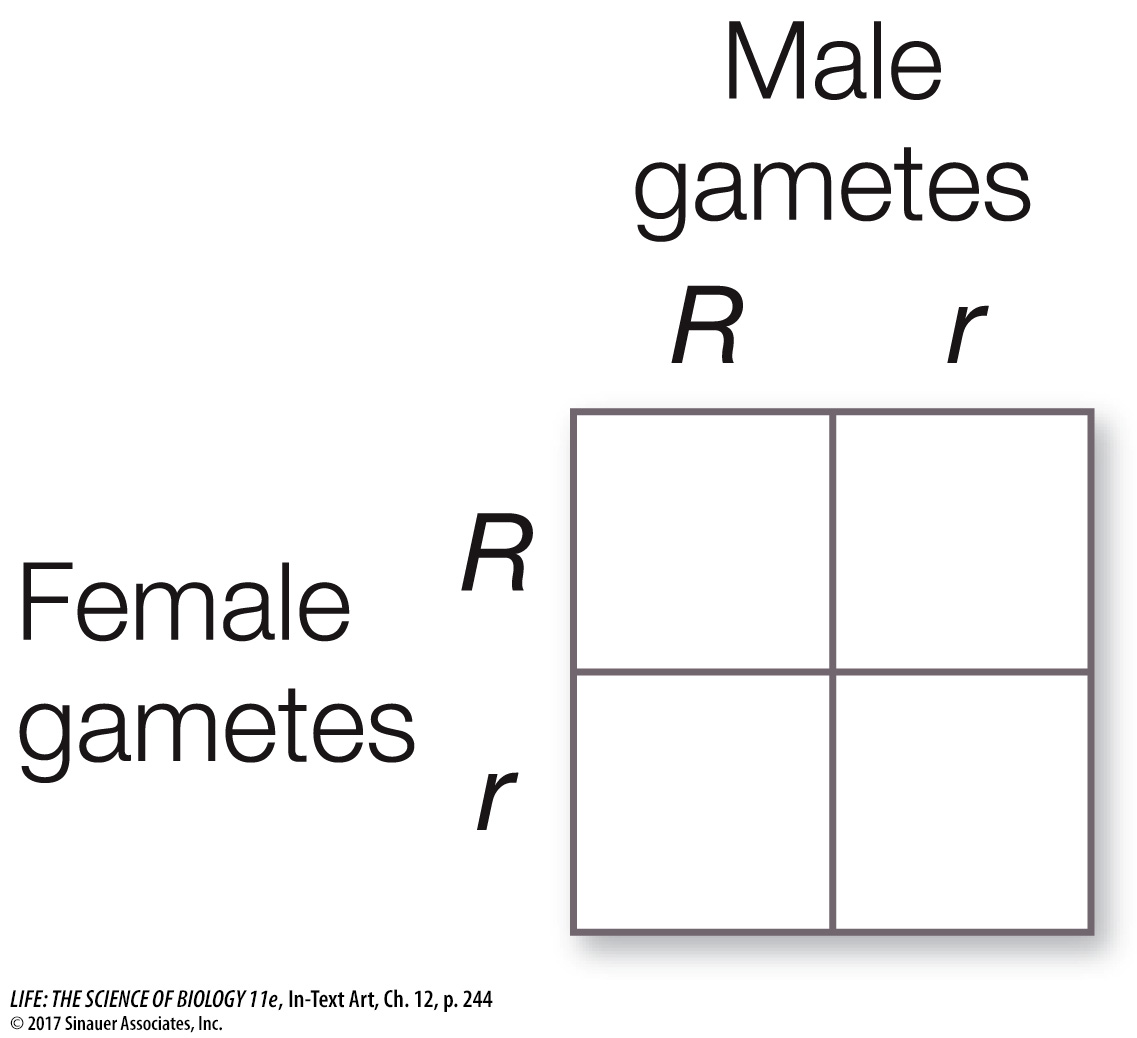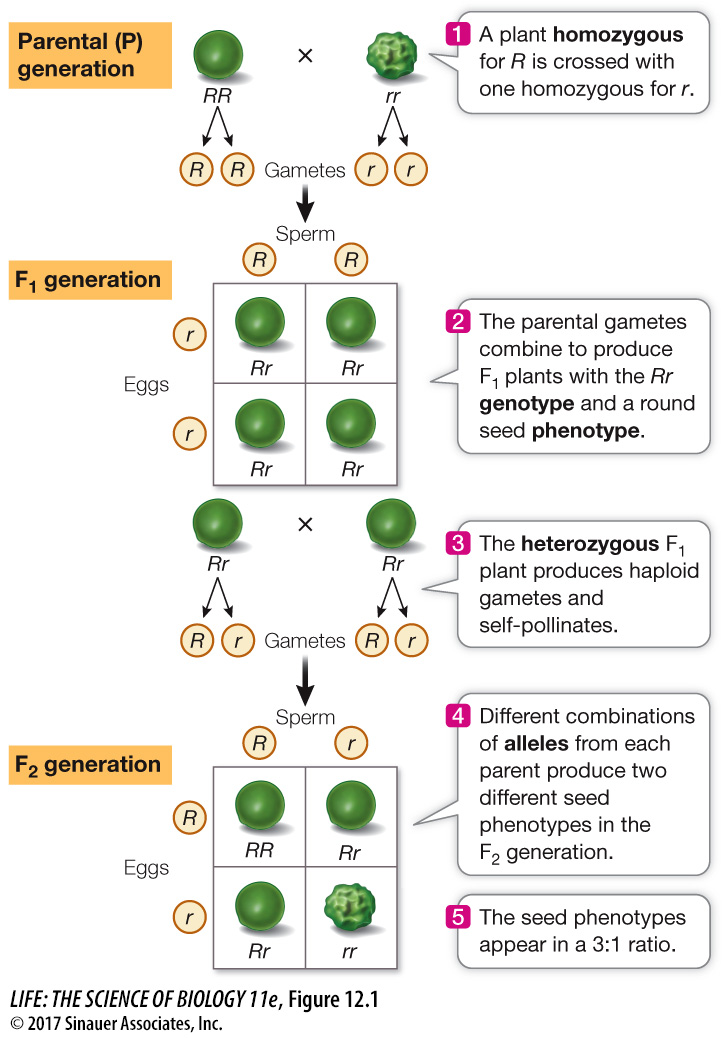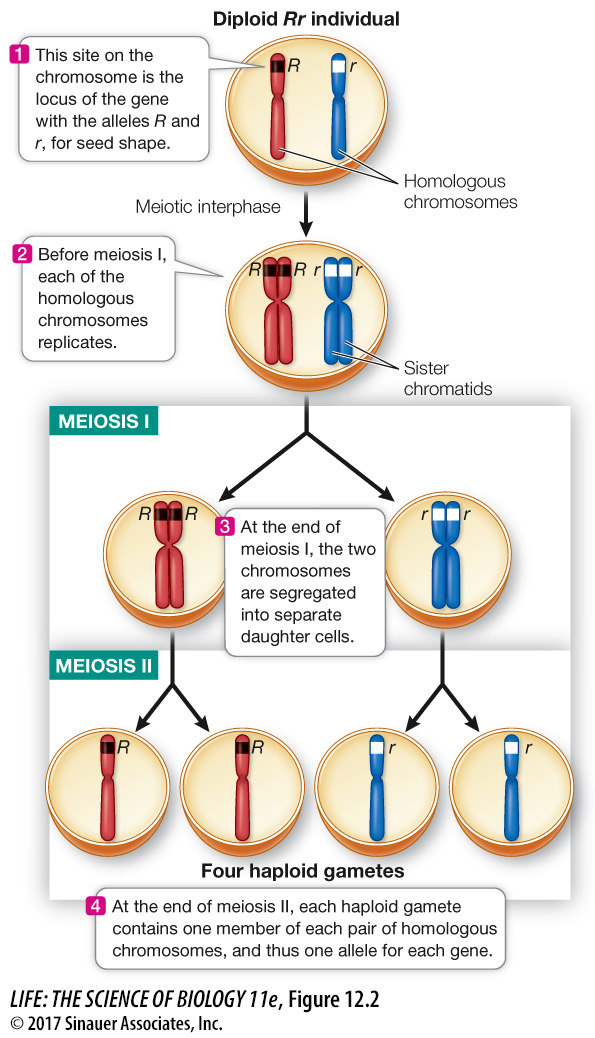Mendel’s first law states that the two copies of a gene segregate
How do Mendel’s theories explain the proportions of traits seen in the F1 and F2 generations of his monohybrid crosses? Mendel’s first law—

It is a simple grid with all possible male gamete (haploid sperm) genotypes shown along the top and all possible female gamete (haploid egg) genotypes along the left side. The grid is completed by filling in each square with the diploid genotype that can be generated from each combination of gametes.
Let’s use a Punnett square to derive the progeny of an RR × rr cross (Figure 12.1). To determine the genotypes in the F1 generation, into each square we put an R from the male gamete (a sperm cell from the pollen tube) and r from the female gamete (the egg cell). All the F1 offspring of this cross (the F1 generation) have the Rr genotype, which produces seeds with a round phenotype. What happens when the F1 generation are crossed among themselves to produce the F2 generation? Once the Punnett square is filled in, we readily see that there are four possible combinations of alleles in the F2 generation: RR, Rr, rR, and rr (see Figure 12.1). Since R is dominant, there are three ways to get round seeds in the F2 generation (genotype RR, Rr, or rR), but only one way to get wrinkled seeds (genotype rr). Therefore we predict a 3:1 ratio of the round and wrinkled phenotypes in the F2 generation, remarkably close to the ratios Mendel found experimentally for all the traits he compared (see Table 12.1).

Mendel did not live to see his theories placed on a sound physical footing with the discoveries of chromosomes and DNA. Genes are now known to be sequences of DNA found on the much longer DNA molecules that make up chromosomes. With your knowledge of *meiosis, you can envision the different alleles of a gene segregating as chromosomes separate during meiosis I (Focus: Key Figure 12.2).
focus: key figure

Q: Cells in a pea leaf have 14 chromosomes. How many chromosomes are actually in each gamete?
7
*connect the concepts As illustrated in Figure 11.15, homologous chromosomes separate in meiosis, which ultimately produces gametes with a haploid (n) number of chromosomes.
We know now that genes determine phenotypes mostly by producing proteins with particular functions, such as enzymes. In many cases a dominant gene is expressed (transcribed and translated) to produce a functional protein, while a recessive gene is mutated so that it is no longer expressed, or it encodes a mutant protein that is nonfunctional. For example, the wrinkled seed phenotype of rr peas is caused by the absence of an enzyme called starch branching enzyme 1 (SBE1), which is essential for starch synthesis. With less starch, the developing seed has more sucrose and this causes an inflow of water by osmosis. When the seed matures and dries out, the water is lost, leaving a shrunken seed. A single copy of the R allele produces enough functional SBE1 to prevent the wrinkled phenotype, which accounts for the dominance of R over r.